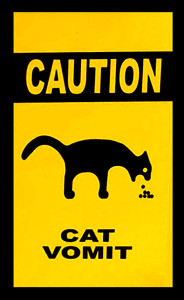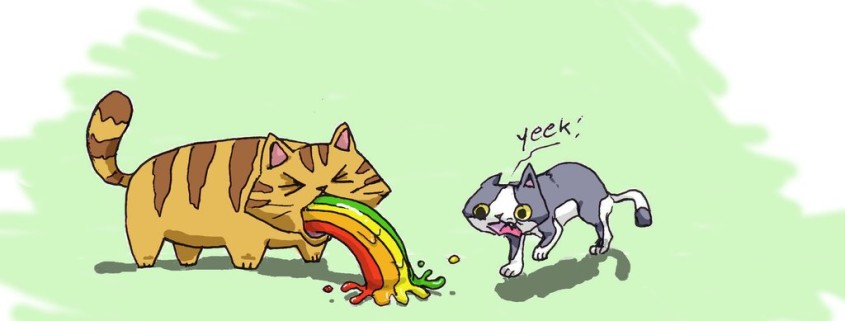Nuke the Puke: Reduce Cat Vomiting by Eliminating Kibble
Puke, vomit, regurgitation… no matter what you call it, it is disgusting and totally annoying to clean up after your cat has gotten sick. Cat vomiting is also probably the number one complaint that we hear from our cat customers. If you’re able to eliminate the possibility of any underlying health issues then the solution is usually very simple and straightforward: ditch the dry food!
What is it about kibble that can lead to cat vomiting? No matter what brand you feed, kibble is too high in carbohydrates and too low in moisture for cats. Remember “grain-free” doesn’t mean “low carb.” The average kibble ranges from 25%-50% carbohydrates and only 10% moisture. A cat’s natural diet of rodents, birds, rabbits, etc. is less than 2% carbohydrates and 70% moisture. This deviation from cats’ natural nutritional profile makes kibble more difficult for them to digest and thus frequently regurgitated.

A cat’s physiology, whether they are an indoor or outdoor cat, is built to receive its energy from protein and fat. A cat feels satiated when they eat a meat-based diet, not a diet loaded with carbs. Therefore cats that are fed a kibble diet tend to overeat because they don’t feel satiated. Not only can overeating lead to regurgitation, but it can also lead to obesity and diabetes.
In addition to reducing cat vomiting, there are also many benefits to eliminating kibble and transitioning your cat to a meat-based diet. Cats are obligate carnivores, which means that they literally have no physiological need for carbohydrates in their diet. Optimal health can only be achieved when we feed a “species-appropriate” diet and ditching the kibble in favor or canned, freeze-dried or raw food is a great place to start.
Stop by the store and we can talk more about your cat’s diet and develop a customized nutrition plan to keep the vomiting down and the happiness up.
Stay tuned for Part 2 of this post and more info on how dry food affects your cat’s urinary and kidney health.

